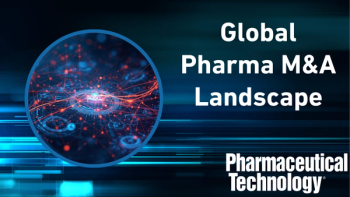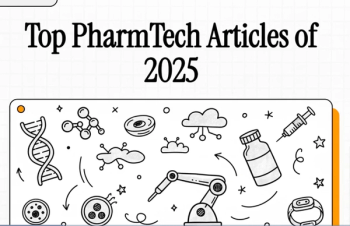
- Pharmaceutical Technology-12-02-2012
- Volume 36
- Issue 12
Tracking the Supply Chain
As the battle against counterfeits gains momentum, PharmTech speaks to Mark Davison, CEO of Blue Sphere Health, and Craig Stobie, global life sciences sector manager at Domino Printing Sciences, about the challenges involved.
PharmTech: In your opinion, how successful has the industry been in fighting drug counterfeiting over the past few years? How would you describe the prevalence of the problem today?
Davison: The situation is totally different depending on where in the world you look. In the EU and US, one would be unlucky to come across a counterfeit medicine. However, as the recent Avastin case (1) showed, even these relatively well-controlled supply chains are vulnerable. In many developing countries, counterfeit drugs constitute a lethal epidemic that is killing thousands of people every year. Most fake drugs are ineffective rather than toxic, and patients still die needlessly from a disease that modern medicine could cure or control because they are taking counterfeits unknowingly. There are no easy answers but there are more things that we could do to help. We need to help these countries to build regulatory capacity, invest in monitoring equipment, educate and involve the end user in the verification process.
Stobie: The problem seems to becoming more prevalent because anticipating where counterfeiting will hit, both geographically and in terms of brand and medicine area, adds to the difficulty. Some have the view that big pharmaceutical companies are more concerned with developing new products and dealing with regulatory issues, and thus, their supply chains are being overlooked. The struggle to encourage a balanced investment in both drug development and supply-chain management can also escalate the problem of counterfeiting.
PharmTech: The globalisation of pharmaceutical supply and manufacturing has contributed to the rise in counterfeit medicines. What are some best practices that the industry can apply to secure their supply chains, especially for products coming from emerging markets such as China and India?
Davison: The key is to examine processes first and then look at security technologies. At Blue Sphere, we use a simple mnemonic called DRASTIC: Define goals, do a Reality check, collate and Analyse data, draw up a Strategy, develop Tactics, plan Implementation, ensure Communication. Many companies make the mistake of jumping to tactics and then getting hung up on technology choice and pack features. Technology bolted on to insecure processes does not add anything except cost. Look at all of your supply chain processes from a counterfeiter’s viewpoint. The right question is not ‘could a criminal copy what we do?’ but ‘could they disrupt, negate, or subvert our processes so that counterfeiting is made possible?’ As a minimum, you should audit all your suppliers for their security processes, as well as the usual product quality parameters. When you are ready to add security features, there are often many free or low cost approaches that you can take. Seek advice and always have a backup plan. Even the best security approaches will eventually be compromised so planned upgrades are a good idea.
Stobie: There are several practices the industry can apply to secure its supply chains. The key ones are:
- Use good distribution practice (GDP) to ensure that products are consistently stored, transported, and handled under suitable conditions throughout a product’s lifetime.
- Apply due diligence, which is crucial to identify potential business issues that may give rise to unexpected liabilities that could have knock-on effects.
- Audit suppliers and contract providers to ensure that they adhere to both national and international standards.
- Incorporate packaging features, such as tamper-evident labeling to demonstrate to end users that the medicine is safe for use.
PharmTech: What challenges still exist in terms of coding and tracing drugs reliably and securely through the global supply chain?
Davison: One key issue for manufacturers is harmonisation of standards. The uncertainty in timing and variation in technical requirements worldwide is adding to the expense faced by manufacturers. Most major manufacturers must plan for multiple legal scenarios. On production lines, which might supply many different geographies, the most onerous coding regime determines the line configuration. An international coding convention would be a major step forward. GS1 standards provide one framework in terms of code formats, but the rules for which transactions need to be recorded and how data are stored and shared also need to be standardised.
Another key issue is ubiquity. How do we ensure that all countries have access to scanning equipment to check for counterfeits at the borders? There is a strong ‘network effect’ in product traceability—that is, the security of the system increases with the number of transactions that are verified. The logic of this approach is that we should involve developing countries in drug-traceability schemes as well as developed economies. In my view, one way to do this is by using mobile phone technology, which can empower billions of patients.
Stobie: The challenge regarding tracing drugs reliably and securely is that the problem is getting bigger with time. Pharmaceutical companies are working in an international environment, which is hard to moderate due to different regions presenting different challenges.
Coding and marking go quite a way towards building and operating a secure global supply chain, but need to be supported by other elements, such as risk assessment and management, to create a safe ‘whole supply chain’ picture.
There also needs to be more investment in technologies that support the coding and marking of drugs. It is ironic that, in most countries, a bottle of water can have more tamper-evident packaging than a £1000-oncology drug. Combining coding and marking with such strategies would be a huge help.
PharmTech: What new authentication technologies and system strategies can help to identify and prevent counterfeits?
Davison: The world is going mobile. It seems logical that this trend should be factored into product security strategies. The pharmaceutical industry still has an obligation to provide a secure supply chain, and there are new ways to enable authentication of codes, such as fingerprinting technologies. The industry must continue to invest in the safety of its supply chain. However, allowing the patient to verify their medicine as an additional last step gives millions of extra eyes and can provide excellent opportunities for data mining to discover patterns of counterfeiting. Consumer verification is proving to be very popular in the developing world. In India, in particular, the approach has been a useful addition to the arsenal of anticounterfeiting approaches. There are no easy answers to counterfeiting. It requires multiple layers of defence, concerted action by industry and constant vigilance by consumers.
Stobie: There are a handful of new authentication technologies and system strategies that can help to identify and prevent counterfeit medicines. A key one is mass serialisation. Although this technology comes with the associated challenge of reliable authentication, it can be highly effective in terms of offering producer to patient traceability and pinpointing risks. Other strategies that can help identify and prevent counterfeits are the inclusion of digital signatures, asymmetric encryption and covert features, which can be verified with a mobile phone.
Note
1. On Feb. 14, 2012, the media reported that counterfeit versions of Roche’s multibillion cancer drug, Avastin (bevacizumab 400mg/16mL), had been distributed in the United States.
Blue Sphere Health is a consultancy based in the United Kingdom, with a focus on global healthcare, pharmaceutical security, patient safety and anticounterfeiting. Domino Printing Sciences, a company specialised in coding, marking and printing technologies, formed an internal task force in 2011, dedicated to helping pharmaceutical manufactures comply with the new European Union’s Falsified Medicines Directive (FMD) that member states must begin implementing in Jan. 2, 2013.
Articles in this issue
about 13 years ago
Pharmaceutical Technology, December 2012 Issue (PDF)about 13 years ago
Harmonizing Global Efforts Against Counterfeitsabout 13 years ago
Harnessing the Power of Fingerprinting Technologiesabout 13 years ago
Mice on a Missionabout 13 years ago
When Disaster Strikes at Homeabout 13 years ago
Acquisitions Reshape the Bio/Pharm Services Industryabout 13 years ago
Health Policy Challenges for Obama Administrationabout 13 years ago
Job Securityabout 13 years ago
Innovation in a Leading Disease Target: Alzheimer'sNewsletter
Get the essential updates shaping the future of pharma manufacturing and compliance—subscribe today to Pharmaceutical Technology and never miss a breakthrough.




